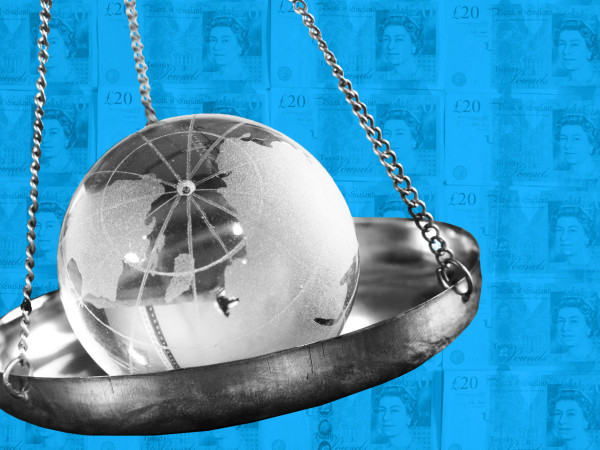
Article 3 / 4
Guide to multi-asset in a changing worldBuilding a diversified sustainable investment portfolio

The rise of sustainable investing over the past decade has created fresh opportunities for clients to position their portfolios in a way that aligns with their values, but also presents profound challenges around diversification and wider portfolio construction.
Central to this challenge is that, in terms of equity exposure, many of the companies that would screen positively as sustainable investments will in many cases be relatively early stage, non-dividend-paying companies, and, due to the strong performance of the share prices of such companies in recent years, are also likely to be trading at relatively high multiples when compared with the rest of the market.
Those factors together tend to mean that sustainable equity investors can end up owning a portfolio of growth stocks, with little exposure to value or other style factors, creating a portfolio that is quite lopsided.
Balancing act
Will McIntosh-Whyte, multi-asset investor at Rathbones, says he was initially sceptical about the potential to build a properly diversified equity allocation when his business launched a series of sustainable funds, but has found that “if you look globally it is possible to be diversified. You have to find assets that don’t perform like growth stocks – financial companies can be an example of that".
He adds: "Sustainable investing is not just about buying early stage growth-type companies, maybe that’s what impact investing is about, but sustainable investing is broader. There are financial companies in areas such as banking and insurance that fit the criteria of sustainability and which benefit from rising interest rates.
"But also, we don’t want to be too reliant on global GDP movements, so buy bonds, for example from the state of New South Wales. That is a commodity producing region and so benefits from higher commodity prices and so the currency strengthens with the benefits accruing to shareholders.
Clive Emery, sustainable investment fund manager at Invesco, agrees that the key to being diversified is to have a broader definition of sustainable.
He says: “If you define it very narrowly, then it is inevitable that you will be exposed only to growth stocks. Sustainable is, to some extent, in the eye of the beholder. You can include a wide variety of criteria, such as gender and climate as well as others. The duty of the fund provider is to make clear to the clients how they see sustainability, how they define it. There are multiple ways of doing it, and all are OK, as long as the client knows what they are getting.”

Emery says there are three broad categories of ESG fund: sustainable, impact and ethical – with the latter tending to focus solely on excluding companies that do harm.
He observes if one clearly differentiates between those three elements, then it becomes clearer what types of investment a fund can make, then diversification is possible.
He says: “One of the mistakes people make is to invest in a ‘leaders fund’, that is, a strategy which owns only the most sustainable equities. If you do that, you will probably end up with a lot of exposure to tech. So investing in a fund that takes a broader view can help reduce that.”
Kate Rogers, head of sustainability at Cazenove Capital, says: “Most sustainable investors seek to avoid harm, by removing companies such as tobacco or oil companies and underweighting sectors like banks (that finance fossil fuel projects). Unchecked, this does tend to tilt portfolios towards growth and quality styles, with many sustainable ETFs over-concentrated in large tech names.
"This is why active management is essential; to ensure portfolio construction is based on active decisions rather than momentum driven – we want to hold stakes in good companies that are also good investments. [We have] exposure to quality, through a core allocation to ‘sustainable leaders’ for the long-term, who are considering all their stakeholders.
"We also allocate to thematic and impact managers that offer strong diversification properties and positive impact. These funds invest in businesses contributing to environmental and social solutions. As a result, these managers tend to have a bias towards small and medium-sized growth businesses. Diversification is also achieved through allocations to other assets like social housing, renewable energy, energy storage, social and green bonds, and sustainable infrastructure.”
Bonds and sustainability
A key debate among market participants in recent years has been around whether bonds issued by governments should be included in sustainable portfolios given that almost all governments spend money on armies.
This is a key consideration for those who have diversification as a priority, as government bonds typically perform well when equities perform poorly, creating a natural diversification.
Emery says he does include sovereign debt in portfolios, and assigns countries a sustainability rating based on a letter of the alphabet, similar to the way countries are assigned a credit rating. This way, he says, he can obtain the diversification provided by sovereign debt, while also complying with sustainability criteria.
Eren Osman, co-chief investment officer at Arbuthnot Latham, says that from a fixed income perspective, it is difficult to build an allocation to corporate bonds that is both sustainable and diversified, as the companies issuing bonds that meet both criteria tend to operate in a small number of sectors.
He is happy to allocate to government bonds, particularly UK government bonds, as this is “home market” for most of his clients.
Megan Brennan, sustainable investor at Sarasin & Partners, says industrial companies may be less glamorous than other sustainable businesses, yet many are using the products of the more glamorous companies, but trade at lower valuations.
david.thorpe@ft.com





